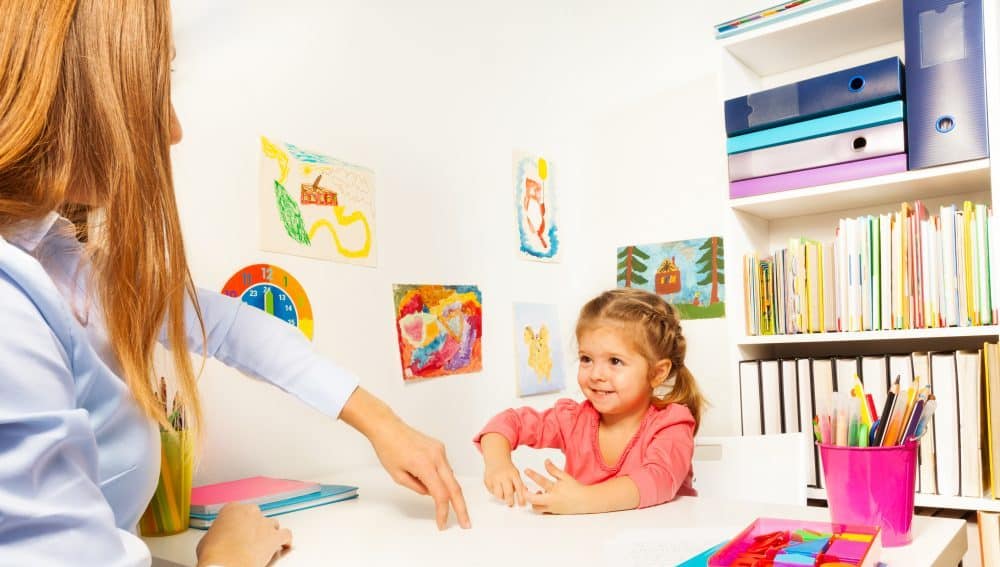MED-EL
Published Apr 21, 2017
10 Strategies To Get The Most Out Of Cochlear Implant Rehabilitation Sessions

When your child is first diagnosed with hearing loss or fitted with a device, your family may often be encouraged to identify a hearing professional and begin hearing rehabilitation. It can be difficult to know how to work with a therapist and know you are getting the most benefit from the cochlear implant rehabilitation sessions. These 10 tips will offer suggestions for what you can do to get the most from your therapy sessions.
- The first step to a successful therapy session is having hearing technology that the child wears consistently. It is important to remember that hearing implants are not like flipping on a light switch. Helping your child develop listening and spoken language takes work, time, and practice, and that means the hearing implant must be worn during all waking hours. Your therapy will make minimal progress if your child only wears their device during therapy sessions, or if the device has a broken cable or is out of batteries. If you have trouble ensuring your child is always wearing their hearing implant, use part of your therapy time to brainstorm solutions to keeping it on.
- The choice of therapist is also important. It is critical to choose a therapist who is willing to empower YOU as the number one teacher in your child’s life. You are with your child for hundreds of hours each month, and in comparison, your therapist may only spend 4 hours of therapy with you. If your goal is for your child to develop listening and spoken language skills, then 4 hours a month isn’t enough. Your child needs you to know how to promote this in your activities and conversations at home. Find a therapist who can teach you how to maximize your time at home with your child.
- Once you have found a therapist who is working with you, it’s time to commit to being an active participant in therapy! Whether you visit a clinic for therapy or your therapist comes to your home, you should be an active participant in all therapy sessions. What are the goals your child is working on? What strategies can be used to target the goals? If the therapist models an activity, take a turn and see if you can do it yourself. Learning your child’s goals and practicing the strategies during therapy will greatly increase your ability to work on them when your therapist isn’t there.
- A therapy session is a busy time with lots of activities and discussions. It can be difficult to remember what happened and what you need to work on once you leave the session. It may be useful to bring a notebook to record the goals, strategies and ideas to work on at home. Taking notes may help to remind you what to focus on that week and help you track your child’s progress.
- If the goals, activities, and strategies that are suggested by your therapist are difficult to understand or don’t make sense, ask questions. The more you ask, the more you learn, and the more confident you feel trying these strategies at home.
- Once you have found a great therapist and have a plan for activities at home, it’s time for the next step: Carry over the activities into your daily routines. If the goals are familiar and you’ve practiced using strategies to promote listening skills during therapy sessions, you should begin finding ways to adapt the therapy goals to your daily life. But you don’t have to do this alone! Spend time brainstorming with your therapist ways to target therapy goals at home.
- It is important to update your therapist on progress! If you introduce a new goal during therapy on Monday, and your child masters the goal by Thursday, let your therapist know that your child is ready to move on to a new goal! If your child needs more help, or the strategies don’t seem to be working, give your therapist feedback so you two can find a better solution to targeting the goal. Communication is key!
- Additionally, it’s important to keep others updated on your child’s goals as well. When more people know the goal, more people can help practice! Make sure both spouses know what’s being targeted. Siblings, babysitters, teachers, and grandparents are also great people to share goals, strategies and activities with. An easy way to keep everyone on the same page is writing the goal on a sticky note and keeping it on the fridge. Take it down when the goal is mastered!
- Speaking of siblings, spouses, babysitters, teachers, and grandparents—these people can also participate in therapy sessions! Since the goal is growing language as naturally as possible, involving other people in therapy can be a great way to empower them to practice goals and learn to carry them over at home.
- Finally, make sure you share progress with audiologists. Describe your child’s progress. Discuss situations where they find it difficult to attend to listening such as noisy environments or it is a particular sound they don’t like. Record the results of the listening check each day and inform your audiologist if there is a change in the results. This information can be invaluable for audiologists during device mapping and programming appointments, helping you maximize your child’s ability to hear and process sounds accurately.
Subscribe to the MED-EL Blog to receive all the latest rehabilitation posts like this straight to your inbox, every week!
MED-EL
Was this article helpful?
Thanks for your feedback.
Sign up for newsletter below for more.
Thanks for your feedback.
Please leave your message below.
Thanks for your message. We will reply as soon as possible.
Send us a message
Field is required
John Doe
Field is required
name@mail.com
Field is required
What do you think?
MED-EL


